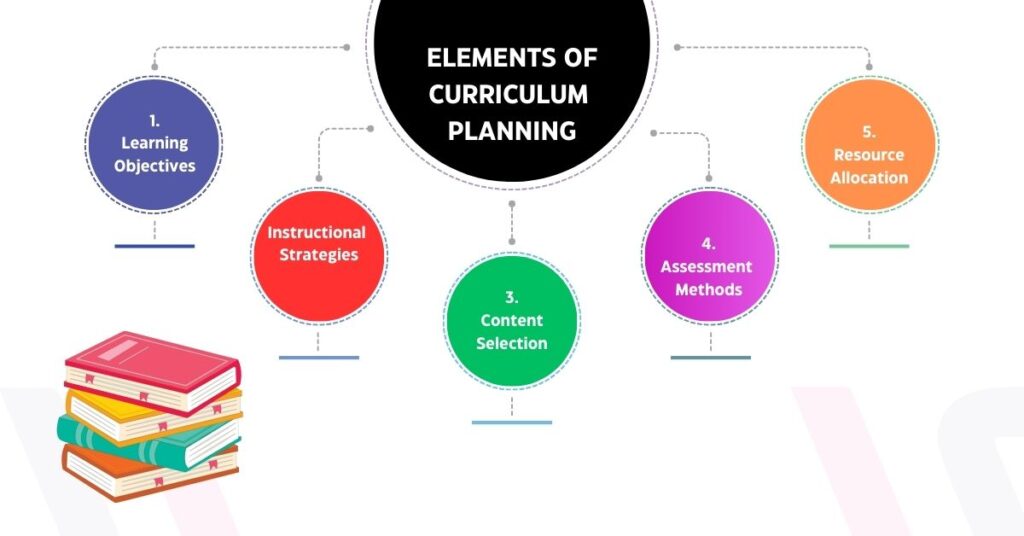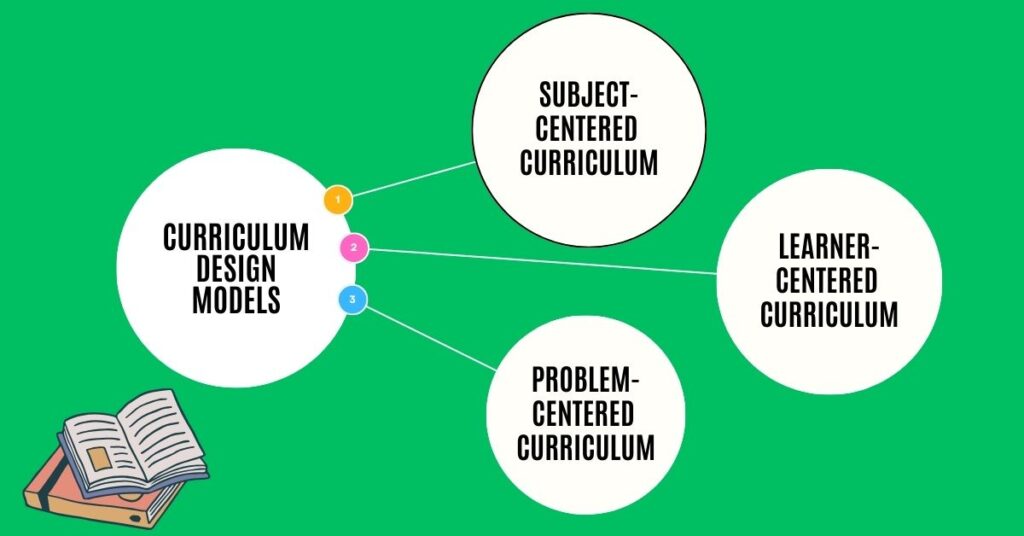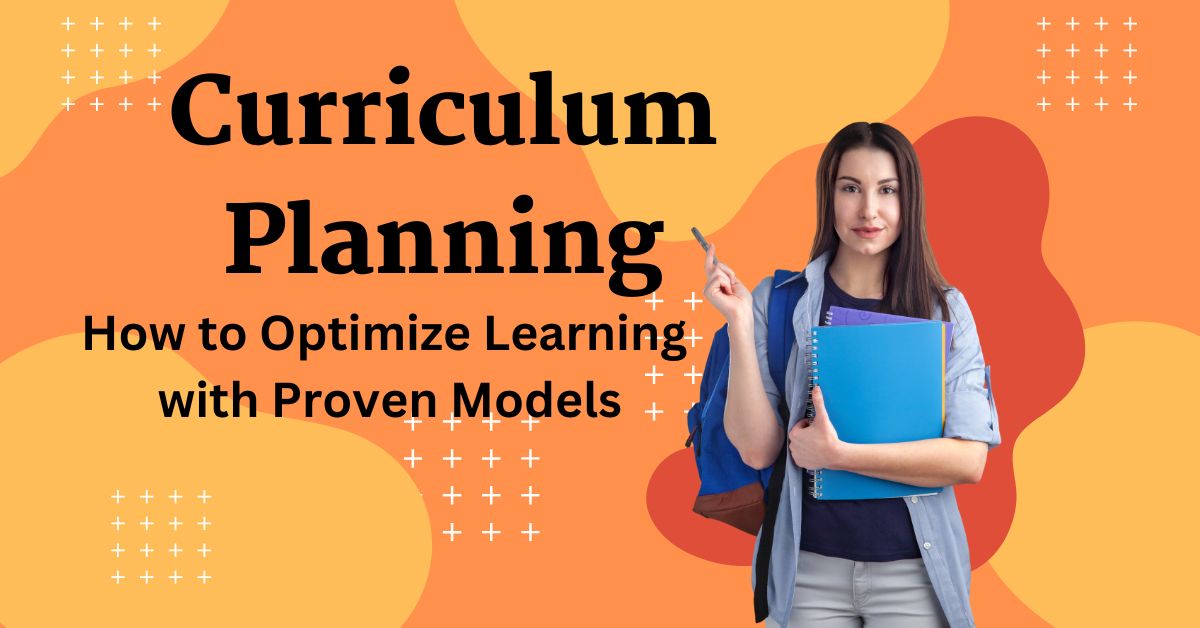Highlights
- Introduction
- Purpose of Curriculum Planning
- Importance of Curriculum Planning
- Benefits of Curriculum Planning
- Elements of Curriculum Planning
- Principles of Curriculum Planning
- Levels of Curriculum Planning
- Three Major Curriculum Design Model
- Subject-Centered Design
- Learner-Centered Des
- Problem-Centered Design
- Conclusion
Introduction
Curriculum planning exists as the key educational process that determines both the organization and substance of student educational encounters. The design of an educational curriculum occurs through the advanced integration of several academic fields to create lessons. It fulfils educational targets and teaches students practical skills. The definition of curriculum planning is important for teachers who want to deliver meaningful educational experiences.
The main purpose of curriculum planning and development consists of establishing learning opportunities that serve every student in education. The process includes choosing learning content along with its significance. It is establishing effective teaching methods for learning delivery. The foundation of effective curriculum planning and implementation relies on standards from the current curriculum and learner needs alongside available resources.
Curriculum planning tools are used by teachers to organize their lessons effectively. Curriculum planning is very helpful to students for their systematic learning.
The Importance of Curriculum Planning

1. Ensures Standardized Learning
Standardized education occurs through standardized learning, which results from proper curriculum design. The standardization process creates educational fairness because students from every geographic area, along with every educational institution, obtain identical educational content. The standard guidelines help teachers deliver the core competencies that should be assessed throughout various subjects and grade levels.
2. Support Student Engagement
Effective curriculum planning should use various teaching approaches that include projects with interactive discussions combined with experiential activities to encourage student involvement and enhance their engagement in learning. Students who stay actively involved in learning naturally develop enjoyment of education. It leads them to improved academic outcomes through their increased professional potential. Instructional plans that include technological elements enhance student interest in learning and the level of enthusiasm.
3. Facilitates Effective Teaching
School frameworks create an efficient teaching environment when teachers schedule their lessons according to important educational goals. The systematic teaching method enables teachers to apply educational techniques that match the different educational preferences of students. The tracking system of progress allows educators to monitor student advancement as well as modify instructional approaches and confirm that program targets get reached continually.
4. Encourages Skill Development
A well-planned curriculum helps develop critical thinking together with problem-solving and analytical abilities within students. Such educational practice enables students to develop a comprehensive understanding of the material while using their comprehended knowledge to solve practical real-life situations. Students who learn soft skills related to communication along with adaptation and teamwork become ready to handle both professional and personal future obstacles.
Enhances Assessment and Feedback
Learning outcomes are enhanced through structured curriculum because they establish regular assessment systems that provide feedback to students. Students’ abilities, along with their weak points, become detectable through ongoing assessments consisting of quizzes, presentations, and projects. Students benefit from feedback because they can learn to analyze themselves regarding their educational development and undertake needed improvements. Educators benefit from this system to modify their teaching methods using assessment information that leads to enhanced student success.
The following is a chart summarizing the importance of curriculum planning based on the above information:
| Aspect | Importance | Key Benefits |
| Ensures Standardized Learning | Standardized education through proper curriculum design. | Creates educational fairness. Provides identical educational content across regions. Helps teachers deliver core competencies. |
| Supports Student Engagement | Uses varied teaching approaches (projects, discussions, experiential activities). | Encourages student involvement. Enhances enjoyment of education. Improves academic outcomes and professional potential. |
| Facilitates Effective Teaching | Systematic teaching methods aligned with educational goals. | Enables tailored teaching techniques. Tracks student progress. Ensures program targets are met. |
| Encourages Skill Development | Develops critical thinking, problem-solving, and analytical abilities. | Builds comprehensive understanding. Prepares students for real-life situations. Enhances soft skills (communication, teamwork, adaptation). |
Benefits of Curriculum Planning

The combination of effective curriculum planning and designing creates multiple advantages that enhance educational experiences between teaching staff and learners. The following are the advantages of curriculum planning.
Enhanced Student Performance
The precise design of the educational curriculum enables teachers to link educational activities closely to assessment strategies, thus leading students to achieve superior learning outcomes. Educators enhance student understanding through explicit learning objective definitions. They develop teaching approaches that adapt to individual student requirements. The teacher’s ability to monitor student progress has significantly improved because of these alignments, which generate personalized feedback for continuous improvement in academic results.
Structured Learning Pathways
The complete learning framework functions as a distinct structure that teaches students basic concepts before transitioning into complex matters through well-ordered steps. A structured learning system enables students to construct excellent knowledge, which enables better connections between new material and previously learned information. The development of learning goals becomes possible for students when they understand how material progresses while teachers gain the ability to identify understanding gaps.
Efficient Instructional Delivery
A well-organized curriculum helps teachers distribute their time and school supplies with higher efficiency. Educational materials such as lesson plans and resource guides, alongside specific learning targets, enable teachers to create interesting educational lessons easily. The organization saves time by offering teachers more delivery freedom to concentrate on teaching at the highest standard. The structured curriculum enables students to get a comprehensive education while helping educators sustain their mental and physical well-being.
Improved Learning Outcomes
Educational programs with proper structure let students learn both theoretical subjects and practical skills, which enable their future achievements. Various teaching approaches, together with multiple assessment methods, enable educators to support the learning preferences of all their students for improved academic achievement. Students gain better skills at the skilful application of knowledge when they root their education in real-world examples and intermingle different subjects. This approach develops their critical thinking skills and problem-solving abilities.
Flexibility for Innovation
Curriculum planning allows teachers to adopt advanced teaching approaches together with digital resources and interactive lesson designs. Schools that are adaptable by nature encourage their educators to develop instructional creativity, thus making lessons relevant while addressing student interests. Courses in education trends and technology enable teachers to design contemporary learning spaces that appeal to students’ interests and ready them for future changes in the world.
A properly designed curriculum allows instructors to establish an interactive space that develops student development along with superior academic achievements and continuous educational development. Teaching and learning methods developed proactively benefit students as they enable teachers to provide education with clear direction combined with creative delivery.
Elements of Curriculum Planning

A successful curriculum planning system depends on multiple essential components that lead to direct, high-quality learning achievements for students during their academic sessions. These elements act as the foundation for curriculum development, directing educators to prepare content material while selecting their instructional methods and assessment methods.
Learning Objectives
- The educational targets specify what students should know, understand, and be able to do by the end of the chapter or course.
- The objectives need to follow SMART (specific, measurable, achievable, relevant, and time-bound) goal parameters because this ensures they remain both clear and effective.
- A better learning objective replaces “Students will understand fractions” with the specific requirement “Students will be able to add and subtract fractions with different denominators.”
Instructional Strategies
- Teaching methods and techniques combined with educational curriculum form the basis for delivering curriculum successfully.
- The teaching techniques consist of direct instruction and project-based learning in combination with collaborative learning, fed classrooms, inquiry-based education, and expanded education.
- Teaching in a learner-centred curriculum involves using both hands-on experimentation and discussion-based activities for student engagement.
Content Selection
- The curriculum· Then detailed sequences of instruction that are properly age-appropriate and culturally relevant content.
- The curriculum content needs to match with learning standards in addition to subject requirements, and students need to have comprehensive coverage of knowledge and skills.
- In a science curriculum, basic content starts with the weather and ends with climate change.
Assessment Assessments Methods
- Education assessments evaluate student understanding and their educational progress and curriculum teaching quality.
- Assessment includes formative assessments such as quizzes and assignments and summative assessments, which encompass standardized tests and final examinations, together with presentations. ·
- Curriculum Based on problems use assessment methods that include group projects and case studies instead of traditional testing approaches.
Resource Allocation
- The successful delivery of a curriculum requires teaching materials alongside technological tools, financial support, and human resources who will teach the curriculum.
- All educational institutions need to guarantee equal opportunities for students to obtain required learning materials, including books, digital resources, experimental equipment, and expert teachers.
Principles of Curriculum Planning

The curriculum relies on certain principles to guide and support its design and implementation and values from which a meaningful learning experience can evolve to fit diverse contexts.
Relevance
- The relevance of the curriculum should connect with the needs of society, job opportunities, and the reality that students encounter in daily life.
- Relevant curriculum fills students with knowledge and skills that they can apply in various circumstances in academia, personal life, and professional careers.
- Example: Due to modern advancements in information technology, digital literacy skills are now an instrumental part of education.
Coherence
- Coherence means linking together the component objectives, the content, the teaching strategies, and the assessments.
- Promotes a progressive learning environment where new learning is constructed based on and informed by prior knowledge.
- Example: A mathematics curriculum should include a sequence that begins with simple arithmetic concepts before adding algebraic concepts.
Flexibility
- The curriculum must stand adaptable to alter educational trends, changing student needs, or changes brought about by technological advancements.
- The curriculum allows flexibility to be incorporated by the researchers’ findings in adjusting the demands of the labour market.
- Example: Blended learning models combine traditional instruction with modern online learning platforms for flexibility.
Integration
- The curriculum promotes the interdisciplinary connection of knowledge across subjects.
- It allows students to make meaningful relationships between learning concepts and apply such knowledge in a holistic approach.
- Example: The environmental sciences lesson can have integrations like geography (weather and climate studies), economics (the cost of conserving), and ethics (sustainable ways of living).
The balance between theory and practice
- A curriculum must contain elements of theoretical knowledge and hands-on applications.
- It encourages experiential learning whereby students develop skills and apply previously learned knowledge to real-world situations.
- Example: A medical education curriculum balances classroom lectures on anatomy with practical training in clinical settings.
Levels of Curriculum Planning

Different levels of educational planning include both individual classroom choices together with national education policies. Educational outcomes together with learning experiences depend substantially on every level of the planning system.
Classroom-Level Curriculum Planning
- Educational staff creates lesson plans together with instructional strategies and assessment methods from the established curriculum guidelines.
- Schools identify personalized instruction quantities as well as adapt their teaching approach according to classroom interactions and students’ learning patterns.
- The teaching staff modify a pre-planned curriculum content by adding team-based activities that allow students to learn through interactive methods.
School-Level Curriculum Planning
- Administrators, together with department heads and coordinators of curriculum, develop institutional programs that follow established learning standards and institutional objectives.
- Low-level administrators plan courses while also organizing subject integration and co-curricular tasks and distributing educational resources.
- A school implements STEM-focused programs as part of its strategy to develop student abilities in science, technology, engineering, and mathematics fields.
Regional/District-Level Curriculum Planning
- Standards in education remain consistent for multiple educational institutions located in the same district or regional area.
- The curriculum development process, along with its planning, needs to take into consideration both economic aspects and cultural influences and region-specific requirements.
- Each rural district concentrates on agricultural teaching, whereas urban districts centre their curriculum on technology and entrepreneurship education.
National-Level Curriculum Planning
- Government education authorities, together with national boards and curriculum councils, execute this initiative.
- The institution makes decisions about core subjects, establishes standardized assessment tools, establishes teaching qualification requirements, and creates guidelines for national education practices.
- Nationwide school education guidelines in India follow directives issued by the National Curriculum Framework (NCF).
International-Level Curriculum Planning
- It focuses on global education standards, international accreditation, and cross-border curriculum adaptation.
- Students who wish to study abroad together with international schools and educational establishments find this system crucial.
- Worldwide organizations accept the International Baccalaureate (IB) curriculum, which teaches global citizenship together with critical thinking and intercultural awareness.
Curriculum planning exists as a dynamic essential process for architects who need to align educational objectives with appropriate practical teaching approaches alongside assessment methods. Learning experiences created by educators become more successful. It prepares students for academic achievement and lifelong education. They understand the core elements of the curriculum and its implementation principles and various levels.
Three Major Curriculum Design Models

Subject-Centered Curriculum Design
The subject-centred curriculum design represents the traditional and most prevalent educational teaching model in existence. Under this approach, academics take precedence over what students bring from their personal lives, which allows students to fully understand academic fundamentals. As part of this model, the curriculum encompasses specific educational subjects that include mathematics, science, history, literature, and social studies.
Schools use this strategy in primary, secondary, and higher education, which groups information into courses that break down into units and lessons. The educational program keeps teachers on a fixed schedule while their teaching primarily comes from direct instructions from them. This model delivers a complete body of knowledge successfully. It may provide limited adaptability for teaching students according to their personal learning approaches.
Characteristics of Curriculum Planning in Subject-Centered Models:
- Focuses on Subject Matter and Content Delivery
- Student participation and inquiry-based learning take a backseat when the core purpose is teaching students all subject matter.
- Page delivery channels include lectures along with textbooks and both assignments and exams.
- The teaching method builds a strong conceptual understanding of each core subject for students.
- The model uses a structured approach that contains set learning targets.
- This educational paradigm works under predefined conditions because educational materials and assessment protocols receive fixed specifications at the start.
- A careful format of lessons exists before teaching begins so students have minimal access to independent learning opportunities.
- Students need full comprehension of each concept before advancing in the education material for linear knowledge building.
- It is commonly used in higher education institutions and traditional classroom settings.
- Academic institutions, including universities and colleges, apply a subject-centred structure through their split courses into semesters along with separate modules.
- Traditional learning institutions apply this approach to meet requirements from national curriculum standards.
- Science and mathematics benefit the most from this approach, which needs linear subject progression.
- Learning materials together with assessments stem from experts in each academic field.
- Educational materials such as textbooks and study guides that teachers create follow rules grounded in subject specialization instead of the learning requirements of their students.
- Students are evaluated using examinations, quizzes, and standardized tests to uncover their mastery of school subjects, but these assessments do not evaluate their creativity or critical thinking abilities.
Advantages of Subject-Centered Curriculum Design:
- The system delivers complete expertise along with a deep understanding of multiple subjects.
- Students develop outstanding knowledge in basic subjects when they learn specific academic fields.
- The curriculum allows students to acquire a fundamental body of knowledge needed for both college studies and future professional paths.
- A standardized education system has been implemented through this approach, enabling simple performance evaluation of students.
- The standard curriculum provides equal testing conditions because all students study in the same program.
- The standardized grading approach through testing based on uniform evaluation standards makes both student development monitoring and performance assessment more straightforward
- It helps educators maintain control over course content and teaching methodology.
- A structured lesson plan enables teachers to prevent crucial subject matter from missing from instruction.
- Teachers find it simpler to train new instructors because this method maintains a constant delivery of instruction.
Disadvantages of Subject-Centered Curriculum Design:
- The method fails to recognize different student learning patterns and personal interests among learners.
- The educational model does not support individual student learning approaches since students have different favourite learning methods, such as seeing things or doing hands-on activities.
- This method makes the assumption that students learn at equal speeds, so some students remain behind and others get bored.
- Some learners fail to excel under this academic format, which applies strict organizational systems.
- Under this teaching model, students receive minimal influence regarding how their educational experiences should develop.
- Tasks that require student independence and interactive coursework make certain students uninterested when compared to traditional methods.
- Meaningful classroom understanding tends to replace memorization skills when following this teaching approach.
- Textbook memorization for examinations encouraged by heavy attention to tested content blocks students from developing critical thinking abilities.
- Certain students find it hard to connect theoretical learning to practical applications, thus affecting their practical grasp.
The basic structure of subject-centered curriculums serves educational institutions primarily, but such programs become most effective through integration with student-focused and problem-solving approaches. Teachers must use interactive educational techniques, including group debates as well as practical tasks and technological devices, to create classrooms that promote interactive learning and real-world connections.
Learner-Centered Curriculum Design

Through its implementation, the learner-centered curriculum places primary importance on understanding the insights, aspirations, and personal needs of the students instead of traditional classroom instruction. Active learning dominates learner-centred approaches because students become key participants who choose what to learn through discussion-based and self-guided educational activities.
The approach enables students to manage their learning activities independently and supports their growth in critical thinking. It fosters creativity and independence. The approach finds wide use in progressive education programs, personalized learning, and competency-based education. It helps students to master academic concepts and lifetime abilities according to their learning methods.
Characteristics of Learner-Centered Curriculum:
- Focuses on the individual needs and preferences of students
- Each student possesses unique traits, which include separate learning preferences, abilities, and personal interests
- The curriculum serves individual student requirements instead of using mandatory standardized formats.
- The instructional format permits students to pursue topics they find meaningful. It boosts their natural desire to study.
- The approach promotes students to become active learners through their interaction with information.
- Students participate actively rather than passively absorbing information because they actively participate through discussions, research, and problem-solving activities.
- Student learning becomes more meaningful through approaches such as project-based learning as well as inquiry-based learning and group-based activities.
- The knowledge that students acquire from working on practical problems addresses both their understanding and the importance of their education
- The educational program adapts teaching strategies that respond to numerous student learning styles.
- The teaching staff modifies instructional approaches through practical tasks along with visual supports, tale-telling techniques, and technological implementation combined with student-to-student learning activities to support diverse instruction styles.
- Flexible evaluation methods enable students to show their understanding through different types of assignments that include presentations, projects, portfolios, and conventional tests.
- Academic enrichment takes place with skill development in the learning process.
- The learner-centred curriculum develops soft abilities such as communication with professional abilities and leadership but also problem-solving and collaboration.
- Students gain social-emotional skills that contribute to developing their confidence level and resilience along with their adaptability skills.
- The curriculum trains students for ongoing education by developing their intrinsic drive and curiosity together with their capability to develop as learners.
Advantages of Learner-Centered Curriculum Design:
- Increases student motivation and engagement by making learning relevant
- Student performance increases because allowing them to study what sparks their interest leads to both enhanced motivation and active participation in learning.
- The curriculum presents learning through contexts in which students can understand the pragmatic value of schoolwork.
- When students choose their assignments and projects, they develop both power and self-responsibility in learning.
- It encourages creativity and critical thinking.
- Students participate in advanced thinking abilities, including evaluation, analysis, and problem-solving, instead of memorizing rote information.
- Students obtain new creative solutions and ideas through the combination of open-ended tasks and experiential education approaches.
- The learning process supports students to build independent thinking abilities along with decision-making competencies.
- Through personalized learning methods, this approach permits every student to control their educational speed independently.
- Through this method, pupils can learn at their own pace since it provides customizable learning timelines that allow students to progress independently from the predetermined educational sequence.
- Extra assistance goes to students who need additional support as advanced students receive more challenging work when they finish basic assignments.
- The evaluation system based on personal growth eliminates student stress and anxiety because performance assessment ignores fixed benchmarks.
Disadvantages of Learner-Centered Curriculum Design:
- An extensive planning phase with resource allocation requirements must be in place for implementation.
- Educational staff needs to develop and select multiple teaching materials and project activities that cater to various learning types and student preferences.
- The implementation of this design needs both advanced technology and project-based tools along with multimedia resources, but these elements can be expensive to implement.
- Standardized grading requires less time for assessment when compared to the continual student progress checks that teachers need to perform.
- Large classroom settings represent a demanding barrier when implementing open-plan classrooms.
- A classroom with more than 30 learners presents challenges to teaching practice because individualized instruction becomes quite difficult to provide.
- Small class sizes or additional teaching support are essential to provide proper individual student instruction.
- Classroom management shows greater complexity when students pursue separate projects at the same time.
- This teaching style produces variations between educational standards taught between different systematic institutions.
- Under this model, the focus on student selection can produce different learning outcomes because students will focus on different essential materials. Thus, learning gaps develop between schools.
- When students follow individual learning pathways, the standardized assessments do not match with board exams. It leads to a lower ability to track student progress through uniform assessments.
- Traditional parents, together with some instructors, would prefer structured curriculum goals over the unstructured nature of learner-centred teaching.
The learner-centred curriculum serves as a modern educational model that enables students to become active learners with improved critical thinking abilities and enriched comprehension levels. The success of this model requires teachers to have effective instructional methods along with flexible teaching methods and sufficient educational resources.
Problem-Centered Curriculum Design

Content, in terms of constructivism, needs to be problem-centred and focused on real-life problems needing resolution. Such a model does not orient subject matter around the subject discipline or single learning preferences; it organizes knowledge around complex real-world problems that students investigate, explore, and solve.
Constructivism supposes that this approach encourages students to think critically and learn from experience—practice and problem-solving-oriented. It is especially effective in areas such as science, engineering, business, and social studies.
Characteristics of Problem-Centered Curriculum
- Students deal with real problems rather than isolated academic concepts.
- The chosen problems are complex, interdisciplinary, and open-ended, and they compel you to think on higher levels and resort to creative thought in problem-solving
- It encourages enquiry-based and experiential learning
- Students pose questions, investigate and experiment, and engage with facts passed on from others.
- Real learning comes through case materials, experiments, project work, and field service.
- The teacher acts more as a facilitator than a lecturer/guide, directing the student on the path of discovery.
- It encourages collaboration and teamwork
- Students work in teams to explore, discuss, analyze, and recommend solutions to tackle complex real-life problems.
- Helps develop personal skills in leadership, communication, and conflict resolution.
- Experiences working together for shared goals make students appreciate various voices.
- The problem-centred curriculum—a problem-drawn approach—integrates knowledge from different subject matters, whereas the subject-centred curricula focus on isolated topics.
- The earlier example of a sustainability project may include environmental science related to ecology, economics concerning cost analysis, and social studies about policy implications.
- Memorized facts are old and gone as students worked more as critical thinkers and evaluators who recognized supportive evidence for their sneakers and became critics of their problems.
- They usher higher-order thinking and adaptability into knowledge.
Such approaches are effective in preparing today’s students for new careers: most importantly, complex problem-solving.
Benefits of Problem-Based Curriculum Design:
- Enhances higher-level thinking skills
- They go from simple knowledge recall to critical thinking and synthesis through evaluation.
- Prepares learners for real problems
- With a curriculum grounded in such real-world problems, this process facilitates the training of high-level competencies a student will require later in life.
- Researching, data analysis, creative thinking, and weighing decisions are highly applicable to working life.
- Knowledge becomes alive, and students create motivation and enthusiasm for learning when it connects with real-life problems.
- Cooperative and social learning predominantly involves group work, as students learn how to collaborate, express themselves, and respect others’ opinions.
- Such approaches may engage teamwork in a professional situation and allow students to be flexible in their future careers.
- With a problem-centered approach, a student can solve the problem in his or her own way, without any prescription on how to go about it.
- There will be many possible paths for which students will have to explore, analyze, and practice various methods and procedures.
- This versatility provides for certain learning styles and enables students to use their strengths.
Disadvantages of Problem-Centered Curriculum Design:
- Time-consuming and Requires Extensive Planning
- Designing real-world problems that make sense within a focused curriculum takes extensive preparation.
- So the teacher must carefully plan for resources, materials, equipment, and student assessments in order for them to reach their academic standards.
- In larger classrooms, it is difficult for the teacher to differentiate support and feedback.
- Some schools don’t provide the means (e.g., technology, laboratories, community linking) to allow for this hands-on learning.
- Some regulated curriculum requirements might not be tackled if the child dives deeper into the content and does not strictly stick to the designated topic content.
- Whereas a traditional grading framework uses a right-wrong distinction, problem-based learning often involves qualitative and creative solutions.
- Tests of commonly used material content make it hard to measure participants’ performance in terms of collaboration, critical thinking, and problem-solving.
Conclusion
Curriculum planning and design are very vital processes in the education landscape and produce optimal experiences for learners, with which they may be equipped to face diverse experiences, in whatever form—content-centred, learner-centred, or problem-centred curriculum deployment.
Innovative teaching methods should be grade-appropriate so that proper building blocks for the future of the students are created; systematic evaluation methods for homeroom child expectations beyond academics and effective communication channels should allow teachers to create a curriculum that is best suited to meeting students’ needs. The result of good curriculum design is improvement in academic achievement, bias on independent learning abilities, and structured enhancement of critical thinking capabilities amongst the students.
You may like to read:-
How to Teach Life Skills for Students: Effective Strategies
School Student Management: Effective Strategies for Growth and Discipline
The Role of Relationships in Education for Student Growth
FAQ’S
1. What is curriculum planning, and why is it important?
Curriculum planning is the process of organizing and designing educational content, teaching strategies, and evaluations to achieve student’s specific learning goals. It ensures standardized learning and supports student engagement. Curriculum planning helps students to develop critical skills. It improves academic outcomes, and prepares students for real-world challenges.
2. What are the key elements of effective curriculum planning?
Effective curriculum planning includes:
Learning Objectives: Clear, measurable and attainable goals for what students should achieve.
Instructional Strategies: Variety of teaching methods like project-based learning and collaborative activities.
Content Selection: Age-appropriate, culturally relevant, and standards-aligned material.
Assessment Methods: Regular assessments like quizzes, projects, and exams to track progress.
Resource Allocation: It is ensuring access to necessary tools, materials, and expert teachers.
3. What are the main curriculum design models?
The three primary curriculum design models are:
Subject-Centered Design: It points on academic subjects like math and science. It is emphasizing structured content delivery.
Learner-Centered Design: It prioritizes individual student needs, interests, and learning styles. It is promoting active participation.
Problem-Centered Design: It is based on real-world problems, encouraging critical thinking, collaboration, and interdisciplinary learning.
4. How does curriculum planning benefit students and teachers?
Through curriculum planning students benefit from predefined learning structures which improve their interest in their work and help them master critical thinking with problem-solving abilities. The curriculum provides teachers with explicit teaching guidelines that enhance their delivery quality as well as enables them to provide individualized feedback for student achievement growth.
5. What challenges are associated with learner-centered and problem-centered curriculum designs?
When implementing Learner-Centered Design one must invest in thorough planning together with adequate resources and maintain smaller classes for delivering personalized teaching. Flexible learning approaches create possible inconsistent results in student achievements because of their unpredictable format.Implementation of Problem-Centered Design requires substantial time investment. The implementation of genuine real-world problem-solving requires substantial funding together with thorough teacher preparation to carry it out efficiently.

